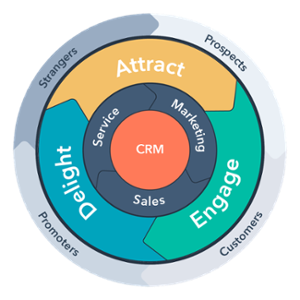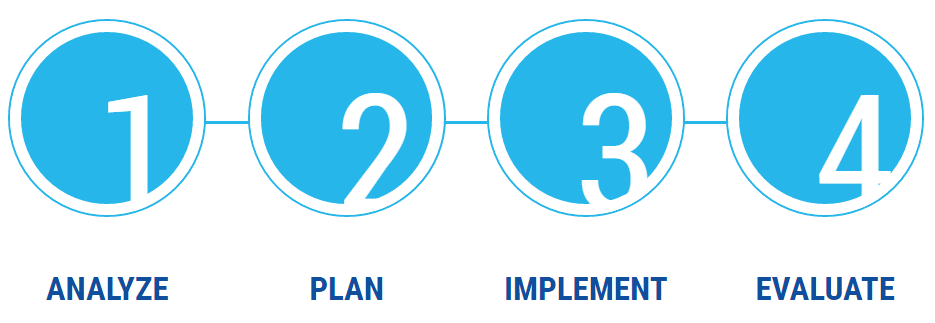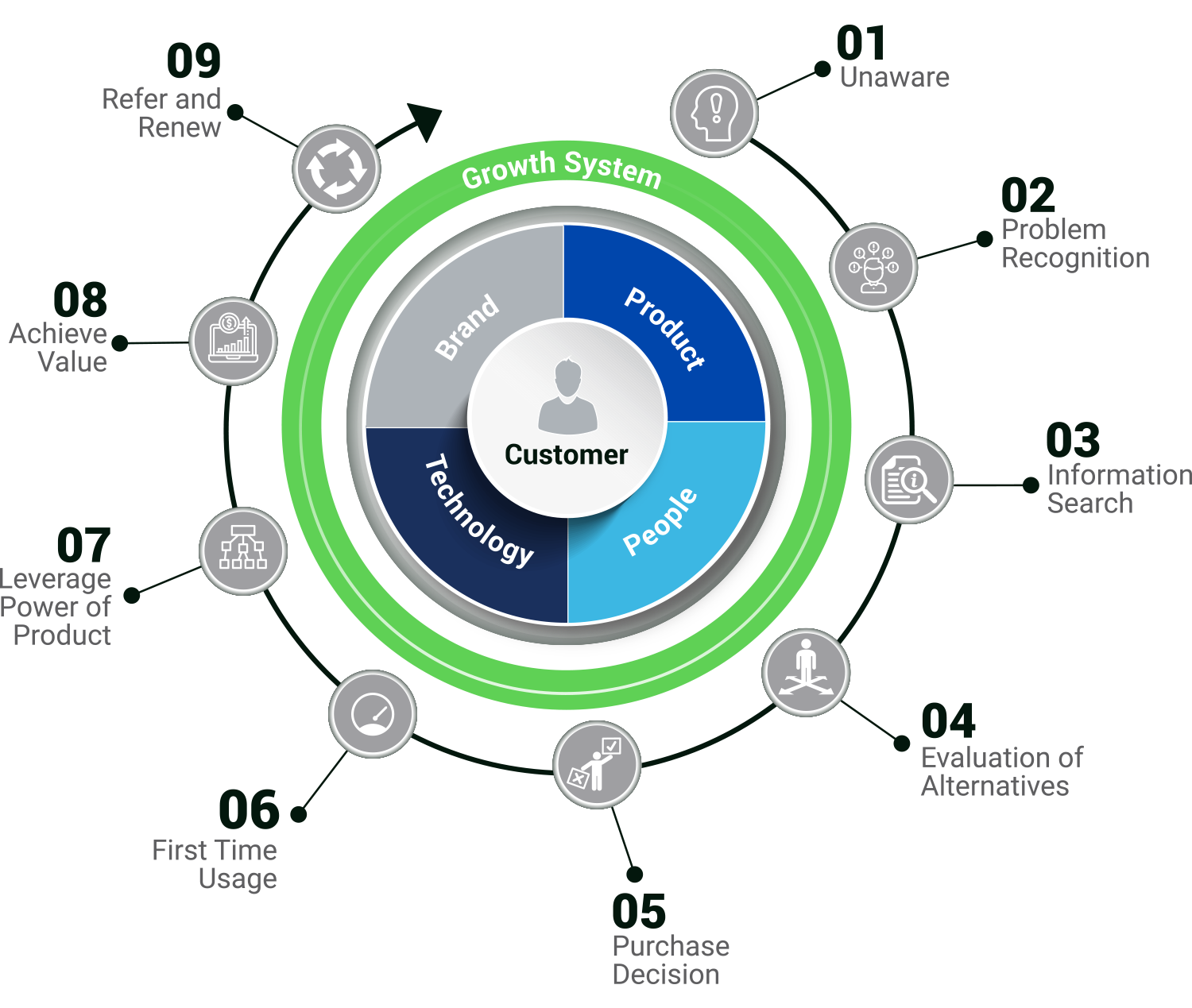%20(69).png?length=320&name=_Blog%20Covers%20ENG%20(NAM)%20(69).png)
 If you just bought the HubSpot Growth Stack, congratulations are in order. You just invested in the most impressive software suite available to businesses that want to grow using online strategies.
If you just bought the HubSpot Growth Stack, congratulations are in order. You just invested in the most impressive software suite available to businesses that want to grow using online strategies.
Now what?
Owning the software is one thing, implementing HubSpot successfully to the point you generate significant results is another. While HubSpot's paid training is a great resource in familiarizing yourself with all the nooks and crannies of the software suite, you'll need an action plan to find success.
The action plan will need to include developing targeting strategies, customizing the settings to serve your business processes, training different team members based on their roles, building and promoting marketing assets, and reporting to track activity and performance. To help you attack the challenge in sequence, I've developed a series of steps you can follow.
4 steps to launching your growth stack
Step 1: Build a cohesive strategy to bring things together, fast
We believe in a launch pad strategy process because we've found it our best chance of getting all elements of the growth stack live and working in a short amount of time. Your growth stack has to launch fast and provide value early. Start by developing a strategy to get your entire HubSpot software suite off the ground quickly. Because of all the interconnected pieces involved, I caution against over-engineering the growth stack to the point you delay go-live. It's a careful balance of building a ton of critical elements in a short amount of time, and getting the system operational and working for your business.
The most important element of this strategy is nailing down your targeting. This process starts with detailing your different buyer personas, developing each one of their buying journeys, mapping you existing content, and developing an ongoing editorial calendar. There are a ton of templates available to support your strategy development and I recommend going through the process with key stakeholders from both your marketing and sales teams. Here's a simple graphic of the process:

With targeting strategies coming together, you're ready to connect it all into an actionable strategy. I suggest developing a digital growth strategy that features all the critical elements for success. Elements should include competitive analysis, detailed sales, and marketing messaging, tactics for audience attraction, engagement, customer acquisition, and how to delight beyond the sale.
When Instrumental Group is hired to support this process, we build pillar content and content clusters, email marketing, and premium content strategies. We build an organic search strategy, and even plans for multi-channel advertising. A new user experience for website visitors is presented, a deep sales system architecture map, conversational marketing, and video strategy are created. We bring everything together into a connected stack playbook that will then be built in the weeks to follow. You might not have the resources to build every element of this strategy, but I know the more effort you put into strategy development the better off you'll be in the long run.
Step 2: Get your sales system up and running
Over the years we've learned that the sales system is the absolute heart of digital success. Think of the sales system as the engine of the growth stack. For most organizations, success with digital is measured by client acquisition, not leads. A line goes up because a sale is made, after all.
So, if you want to acquire customers through online efforts, you have to closely connect a modern sales system with your growth stack efforts. While HubSpot has a complete CRM and sales performance tools, I've found that many organizations buy HubSpot with the intent to integrate it with their existing CRM. Whether you want to stand up a new sales system, or integrate your existing CRM, the HubSpot growth stack is built to perform.
System design and development can look a little different based on the pieces that you may or may not already have in place. I've found that there are three different scenarios when organizations buy HubSpot:
- CRM Migration - your existing CRM sucks, and you bought HubSpot to replace it
- CRM Integration - your existing CRM is solid, but it's not connected with your new HubSpot growth stack
- Sales System Stand Up - you don't have a CRM or sophisticated sales process to work with so you're building in HubSpot from scratch
Whichever scenario you're in, you'll also face the challenge of getting salespeople to change their behavior and adopt the new system. My advice is they must participate in the process, and be closely in touch with everything that's happening with your growth stack. The goal is to build a great strategy and build or optimize the system to meet the needs of the users as well as to provide management the visibility they need to make decisions.
Step 3: Make your website your #1 resource for sales, marketing, and service
If the sales system is the engine of the growth stack, the website is the frame. All acquisition and growth strategies sit atop the website, constantly driving visitors into a variety of pages to serve their needs. While leads and customers are always important, it's critical for you to understand that prospects aren't the only ones trying to use your website to find help. Whether you sell a product or a service, your customers want more from your website. Key relationships such as current customers, vendors, partners, and media also need to use your website. With so many different types of people to serve, your website has a big job to do these days.
The need to provide different types of website visitors choice and convenience is upon us. There's an experience for each one of your visitors. It's either good, or it's bad. Before you turn your website into a one-trick-pony, consider the total experience you could provide. Consider the multitude of roles and responsibilities your website should be servicing. We call it a total customer experience.
Enter the HubSpot CMS, the absolute best solution for building, optimizing, and generating better performance from your website.
At Instrumental Group, we believe in an emerging trend in website development called growth-driven design. It supports the strategy of putting the 'customer' first, enacting change quickly, constant evaluation, and continual growth. In other words, no more long, painful redesign projects with five years of nothing happening until the next one.

Growth-driven design is a smarter, more effective way of building websites that really perform. It requires everyone involved to adopt a mentality for continual improvement, which is also a key factor for growth stack success. GDD allows your team to get a new user experience in place fast, focuses on quick wins, and grows incrementally based on how visitors actually consume your website.
Step 4: Build a modern marketing system
Think of the marketing system as the drive train of a fully-connected growth stack. For the machine to move, it needs a well-developed drive train built to keep moving down the road towards goal. All communication, promotional activity, conversions, and educational efforts should pump through your marketing system. Before you can get to that point, you need to set it up for scale. You'll need to develop an automated system for future execution and reporting. Here's the high-level look at the system development job.
AUTOMATION ENGINEERING
There's a lot of work to do to stand up an automation system. For the launch pad automation project, you should focus on the critical elements needed to get data flowing. Similar to the other elements of your growth stack, this varies depending on the existing state of each system. When migrating to HubSpot, you'll need to develop a completely automated communication system from scratch. I suggest you develop the infrastructure to ensure all conversions are enrolled in smart forms and email workflows based on possible qualifiers like persona, lead source, and position in the buyer's journey. You'll need to implement a series of smart lists behind the form system, so your existing contacts are organized properly. This process will set the automation system up for targeting these contacts with effective, intelligent messaging.
DATABASE MIGRATION & SEGMENTATION
Before you can begin effective communication, you'll need to migrate and clean up your existing contact data. This is basically a big hygiene job. It's best to setup the system before you cleanse, and cleanse before you load. That way you'll get a fresh start to all communication and make sure there's no contacts in the wrong bucket. At Revenue River we build migration and/or segmentation requirement maps, perform data hygiene using tools like Insycle, and migrate only relevant (or marketable) contacts into the new system. Segmentation will be complete when all qualifying contacts are properly sorted into a series of smart lists that allow you to send the right messages to the right groups of people at the right times. Now you're ready to launch into promotion with a healthy drive train!
Beyond the launch – build assets and promote for conversions
I see the race to compete for new business found in digital spaces to be an all-out war. To win even the smallest of battles, you have to have some weapons. As you build your arsenal, you have more and more tools at your disposal. A well built, diverse, continually growing military with hoards of provisions wins the war against the underfunded and underdeveloped.
It's time to get your HubSpot growth stack cranking. I suggest building a ton of weapons and deploying them into a battle for your customer's attention and satisfaction. With all the necessary foundational pieces in place, you can really turn up the heat on asset creation and promotion. Here's some examples of the types of marketing assets and promotional efforts you should be building or investing in:
- Pillar pages and topic clusters: The concept of pillar pages with supporting pieces of content clustering around it is a critically important trend in Growth Stack Marketing. Topic clustering is all the rage with content-based search engine optimization strategy. It's proving to be an exceptionally effective method of driving your best content on your most relevant 'topic' to the top of search engines. With relevant ranking comes traffic, and with traffic comes leads. The idea is simple: figure out what topic you want to compete for. Launching a Growth Stack, for example. That's a topic that this article might be able to compete for. I write a very detailed, definitive piece on the topic. This piece will serve as the center of my SEO strategy for the respective topic. Think of it as the sun (or pillar page) around which all planets in the same solar system will rotate. Now I begin building smaller cluster articles and resources. They're related, or topical, to the sun. I tell Google that they're related by putting a link in each cluster piece directly to the pillar piece. I keep building away, creating new planets and linking them to the sun. I build cluster articles and point them to my pillar page. That's the concept of topic clustering.
- Conversational marketing: There's a movement that's happening that you need to pay attention to. The death of the form. Gone are the days with prospects willingly complete multiple forms in a journey down an over-simplified funnel with dollar signs at the bottom. People want choice. They want convenience. They want the ability to do their research without a sales person blowing them away 5 minutes after they download an offer. Enter conversational marketing. The ability to have conversations in real-time, at the customer's convenience. The ability to speed up conversions and allow visitors direct access to find what they need, even book an appointment on the spot. The logic and artificial intelligence is already there, and it's gaining ground quickly. Why? Because it's serving the customer better than shitty landing pages with over-blown forms.
- Video marketing: If there was any doubt people like to consume video content, consider that 85% of internet users in the United States watched online video content. The call to action is that you've got to incorporate video, and a lot of it. I suggest creating new videos on a regular basis for use in our marketing communication and promotion. Video comes in many forms these days, including mixed media, live shoots, 2D explainers, and whiteboard videos. As an agency, we've invested heavily into this content format to meet the growing demand for affordable video production. We support clients needs from pre-production script and strategy development to production and post-production editing, formatting, revisions, and publishing videos for distribution. As a client's library begins to take shape, I always recommend our clients leverage the considerable marketing and conversion capabilities of Vidyard. It's the best video tech on the planet, and the only video platform with a native integration with HubSpot.
- Email marketing: Email is boring, but still very effective. It's not as sexy as some of the emerging trends in digital marketing, but it plays a critical role in communicating with all types of contacts. The HubSpot automation systems allows for complex workflows with branching logic for multi-touch nurturing throughout the campaigns. The smart list system allows easy targeting for marketing emails. From the time any contact comes into the Growth Machine database, they're tracked, sorted, and communicated with contextually, based on what we believe they're interested in learning more about. Keeping leads engaged, furthering the education journey, and identifying sales triggers for warm hand-off are all functions of email marketing. We love adding SeventhSense to the mix, as we've found the ability to optimize send times based on personal consumption habits really increases engagement rates.
Putting it all together, a look at the organizational growth system

Your growth stack will be your most valuable asset
Your digital sales and marketing efforts will now include the development of a digital sales machine inside of HubSpot. The growth stack should be built to serve your organization for years to come. The growth system and strategy you build will generate value well beyond sales leads. When built correctly, the growth stack has a much bigger-picture value.
- Improved brand awareness, identity, and reputation
- Increased performance across all key performance metrics we goal towards
- Real-time visibility into all marketing/service/web/sales activity, as well as lead sources
- Increased effectiveness for sales with lead follow-up, active selling time, accuracy, and win-rates
- A centralized hub for managing and tracking a total customer experience
- Your website will serve as your #1 tool for sales, marketing, and customer service
There aren't many assets that provide the business with that level of value. I think the business world is still lacking the ability to truly conceptualize and leverage digital assets to this degree. I believe a lack of understanding and lack of tangibility are key reasons why technology-based systems aren't valued the same as other organizational assets. It's easy to put a tangible value on people, buildings, and products. It's harder to get a grip on the deep level of capabilities and value that lurks behind the veil of 'the cloud.' Make no mistake, it's in there.
If you want to win the war, you better get building because your competition is undoubtedly ahead of you in their pursuit of victory. You just have to set it up correctly and then turn it loose. If you ever decide you need help or want to move faster, give Revenue River a call. We're one of the few agencies capable and experienced in all elements of the flywheel. Consider us your growth stack support team. If you'd like to learn more, check out my greatly expanded 5 Emerging Trends of Acquiring New Customers With Digital where I explain what the growth stack really is, and the mindset it takes to win in this age.

